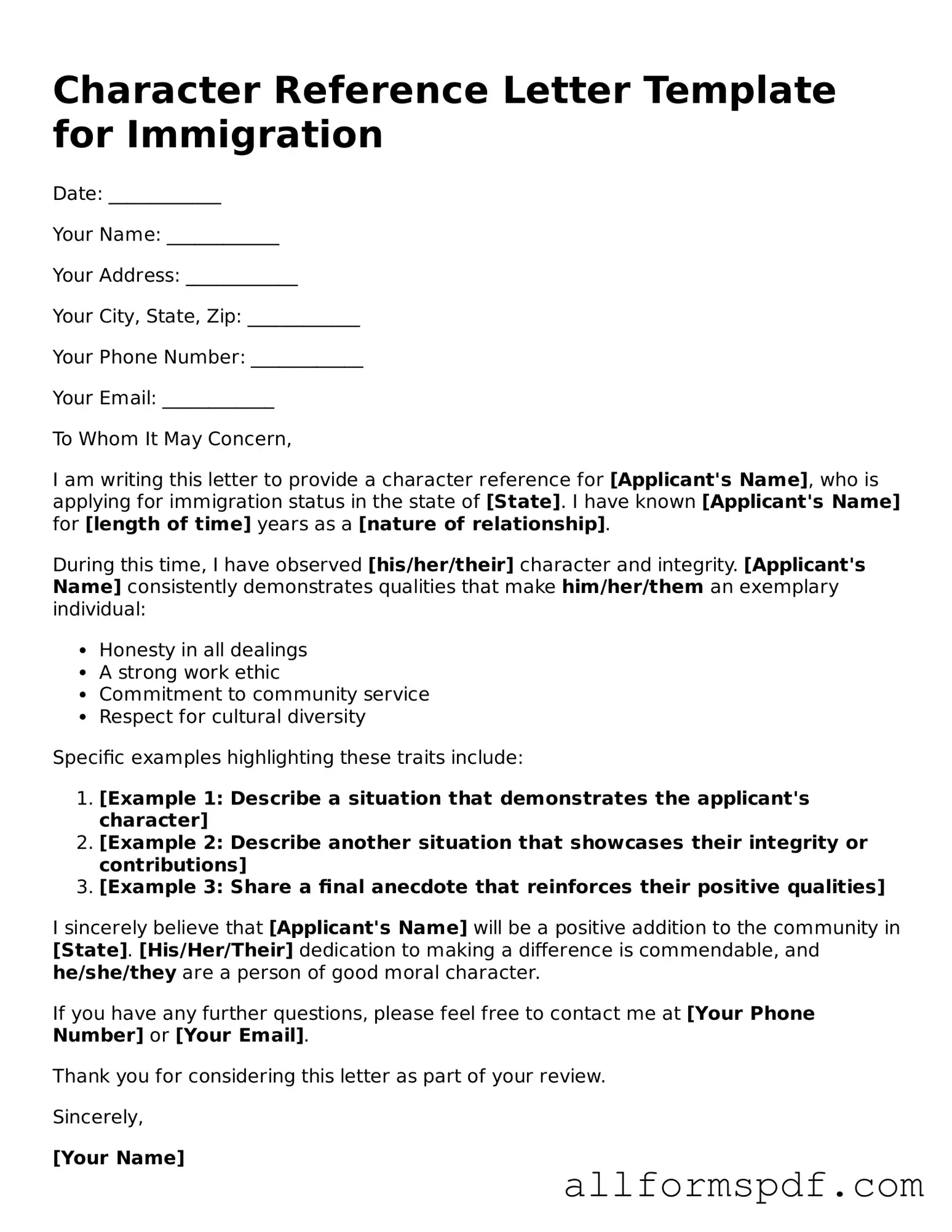When filling out a Character Reference Letter for Immigration, many individuals unintentionally make mistakes that can hinder the application process. One common error is failing to provide specific examples of the individual's character and contributions. A vague letter lacking concrete details does not paint a clear picture for immigration officials. Instead, it’s essential to include anecdotes that highlight the person's positive attributes and community involvement.
Another mistake is using overly formal or complicated language. Immigration officers appreciate clarity and straightforwardness. A letter that sounds too stiff or filled with legal jargon may come across as insincere. Using a friendly and genuine tone can make a significant difference in how the letter is received.
People often forget to include their own qualifications or relationship to the applicant. A character reference is more impactful when the writer explains how they know the person and why their opinion is credible. Without this context, the letter may lack the weight it needs to be persuasive.
Additionally, many individuals neglect to proofread their letters. Spelling and grammatical errors can detract from the overall professionalism of the document. A well-written letter demonstrates care and attention to detail, which can reflect positively on the applicant.
Another common pitfall is failing to address the letter to the appropriate authority or including the wrong contact information. A personalized letter directed to the specific immigration office can enhance its effectiveness. Omitting this detail may lead to delays or confusion in processing.
Some writers also make the mistake of being overly negative or critical, even unintentionally. While it is important to be honest, focusing on the applicant's flaws can undermine the purpose of the letter. Instead, it’s better to concentrate on the positive traits and contributions that support the immigration application.
Lastly, people sometimes overlook the importance of including a closing statement that reinforces their support. A strong conclusion can leave a lasting impression, emphasizing the writer's endorsement of the applicant. It is an opportunity to reiterate the belief in the individual’s character and potential contributions to society.
